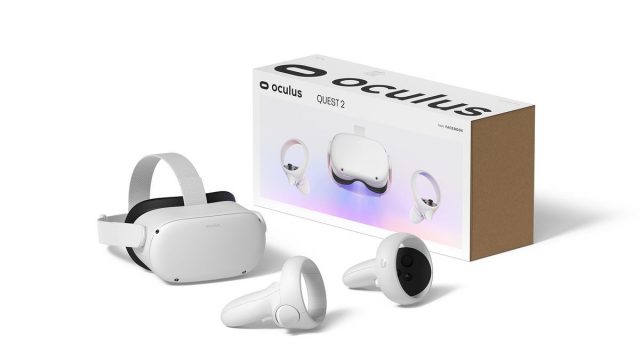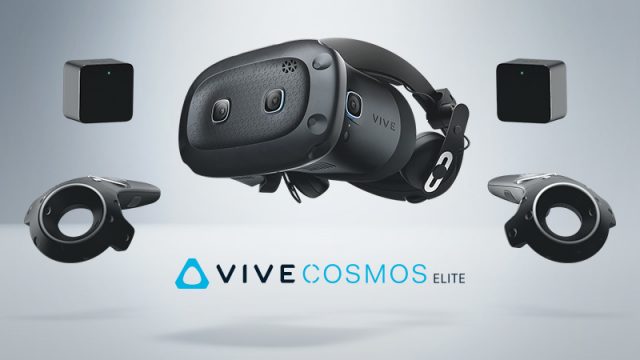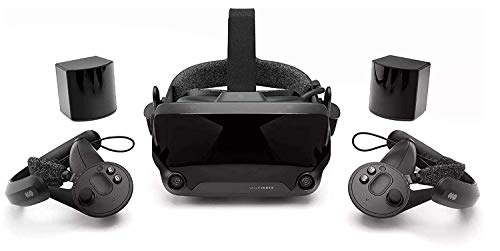Technology with regards to Virtual Reality (VR), Augmented Reality (AR) and Mixed Reality (MR) has taken many steps to improve the quality of experiences users get, since they were first introduced to the world.
In this post, I’ll be looking at a few of the latest VR/MR Headsets and comparing them.
VR Equipment
The VR equipment sets I will be looking at are Oculus Quest 2, HTC Vive Cosmos Elite, and Valve Index Full VR Kit. How I will be judging them is based on graphics, audio, level of user interactivity, comfort, and prices.
Comfort refers to how comfortable the user feels during the VR experience. This can be affected by the Degrees of Freedom (DoF) the headset has. Headsets have either 3DoF vs 6DoF. Having 6DoF allows users to have greater freedom of movement within the virtual reality, which will lessen the difference in signals being sent to the user’s head. This way users are less likely to experience nausea from the VR experience, which is why I label it under “comfort”.
I believe the factors I am judging the equipment on are all important aspects of a VR tracking set. Graphics, audio, level of user interactivity and comfort help to judge how immersive an experience the VR headset allows. Price is also always a factor to potential consumers with budgets.
Oculus Quest 2

The Oculus Quest 2 is the latest VR set created by Oculus, a brand under Facebook. It was released October 2020.
Graphics: The Oculus Quest 2’s headset uses a single-panel Fast-Switch LCD, with a resolution of 1832×1920 pixels per eye. Its default refresh rate is 72Hz by default, although it may be changed to 60Hz in certain cases.
This headset has a field of view (FOV) of ~100º.
Audio: Has in-built speakers into its straps; Has a single earphone jack (in case users want to use their own earpiece instead)
Level of Interactivity: The Oculus Quest 2 comes with 2 controllers to be held by the user. These act as the user’s virtual hands to interact with the virtual environment.
Comfort: The Oculus Quest 2’s controllers with 6DoF tracking.
Price: Starts from 299 USD
Miscellaneous: Needs a Facebook account to be used, to which some people may not be keen on creating
HTC Vive Cosmos Elite

The Vive Cosmos Elite was released in March 2020.
Graphics: The Vive Cosmos Elite headset has dual 3.4″ diagonal screens. Dual screens can help increase refresh rate, and make it easier to adjust the distance of eye separation, or the distance from the screen to the user’s individual eye. Its resolution is 1440 x 1700 pixels per eye.
The Vive Cosmos Elite also has a refresh rate of 90Hz and a FOV of 110º (max).
Audio: Comes with its own stereo on-ear headphones. If users are willing to purchase an additional “replacement kit for earphones”, they may unplug the default headphones and replace it with the user’s own earpiece.
Level of Interactivity: The Vive Cosmos Elite comes with 2 handheld controllers, allowing user to interact with the virtual environment with virtual hands.
Comfort: The headset and controllers support 6DoF.
Price: 899 USD
Miscellaneous: Has base stations to help track the user’s (specifically, the headset and controllers’) position(s) in a room
Valve Index Full VR Kit

The Valve Index Full VR Kit was first released in June 2019. It also opened up for orders again in 2020.
Graphics: The Valve Index headset has dual LCD screens and canted lenses (which allow for a great FOV). Its resolution is 1440 x 1600 pixels per eye.
It allows for an FOV of up to 130º.
Audio: The headset has built-in near-field speakers that are positioned near the ears (but not covering). With the speaker drivers it uses, it lets the user experience a 3-dimensional surround sound, which can help further enhance the VR experience.
Level of Interactivity: The Valve Index comes with 2 handheld controllers to act as virtual hands. These controllers track the user’s motion, as well as the user’s hands and individual fingers, which I feel makes it stand out from other VR equipment sets.
Comfort: This VR equipment set offers 6DoF.
Price: 999 USD
Miscellaneous: Has base stations to help track the user’s position in a room; Has generally been commented on as “heavy”
Final Verdict
Overall, I like the Valve Index Full VR Kit the most.
I dislike the idea of needing to link my Facebook account to the Oculus Quest 2 in order to use that headset, although I admit that for most people who already have a Facebook account and find it convenient for them to link their accounts to their VR headsets, the Oculus Quest 2 is a good choice. The Oculus Quest 2 has very good specs for its price (and is the cheapest out of the 3 options!), making it the most accessible to consumers.
Thus, I decided based on my personal preference that I would rather pick other headsets over the Oculus Quest 2.
As for the remaining 2 headsets, the HTC Vive Cosmos Elite is 100 USD cheaper than the Valve Index Full VR Kit. Both systems come with similar equipment. Hence, we need to compare these two sets’ specs to see if the 100 USD is justified.
The Valve Index’s graphics are slightly superior to the HTC Vive Cosmos Elite. While both sets may offer 6DoF and dual screens, the Valve Index’s graphics allows for greater FOV. In terms of resolution, it appears both headsets are quite similar to one another.
In terms of sound, while the HTC Vive Cosmos Elite allows users to plug in their own earpiece (with an additional purchase required), the Valve Index provides users with 3-dimensional sound by default, allowing for a more immersive VR experience.
I do admit that the Valve Index’s finger-tracking sounds appealing but is rarely made use of as a core game mechanic by current VR games. Nonetheless, it has potential to be used in more games in the future. In fact, there are upcoming games with plans to make use of this unique tracking feature, such as Falcon Age and Boneworks.
Hence, overall, I still like the Valve Index Full VR Set the most.
MR Headsets
The MR equipment I will be comparing are the Microsoft HoloLens 2 (2019), and the Magic Leap One (2018).
I considered including the Nreal Light (2019) and the Dimension NXG Ajna Lens (2018) in this comparison. However, the Nreal Light is not a standalone MR headset like the ones I mentioned above, so I have decided to leave it (and other MR Headsets meant to connect to smartphones) out from this comparison.
In the meantime, although the AjnaLens sounds highly competitive compared to the HoloLens 2 and Magic Leap One with its FOV of 90°; not much information can be found about it regarding its resolution and refresh rates. Furthermore, it appears the company is targeting companies rather than individual consumers. Hence, I chose to exclude it as well.
I will be comparing these MR Headsets based on their resolutions, fields of view (FOV), refresh rates and prices.
Microsoft HoloLens 2

The Microsoft HoloLens 2 is a Microsoft product, hailing from the US.
Resolution: 2048 x 1080 pixels per eye
FOV: 52°
Price: 3,500 USD
Refresh Rate: 120 Hz
Miscellaneous: Battery life typically allows 2-3 hours of active use; weighs 566g; has 6DoF tracking; built-in spatial sound
Magic Leap One
/cdn.vox-cdn.com/uploads/chorus_image/image/60339289/Screen_Shot_2017_12_20_at_9.11.24_AM.0.png)
The Magic Leap One is the first product released by the company Magic Leap, Inc. Similarly to the Microsoft HoloLens 2, it originates from the US.
Resolution: 1280 x 960 pixels per eye
FOV: 50°
Refresh Rate: 120 Hz
Price: 2,295 USD (excluding any service plans)
Miscellaneous: Battery life typically lasts up to 3 hours; has 6DoF tracking; has onboard speakers, with a 3.5mm audio jack
Final Verdict
In regards to MR Headsets, I would pick the Magic Leap One over the Microsoft HoloLens 2. This is because I find the two headsets largely similar (in the refresh rate and miscellaneous sections). The Microsoft HoloLens 2 has better resolution and FOV than the Magic Leap One, but I do not consider it worth the large price difference of approximately 1,200 USD.
For the same price as the HoloLens 2, a consumer could purchase the Magic Leap One headset with additional services and extended warranty. I would also say that the resolution of the Magic Leap One, while not as clear in comparison, is still sufficient for a good MR experience.
Therefore, I overall like the Valve Index (VR) and the Magic Leap One (MR) the most.
((Written by: Ysabella Tan Yu Lin))
